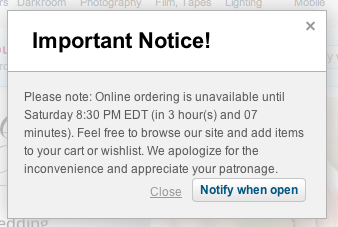This link really screwed me up…
https://kruemcke.wordpress.com/2015/09/29/auld-lang-syne-ibm-systems-director-aix-6-withdrawn/
It was the announcement that IBM Systems Director, the product I spent years working on, was officially being pulled from market.
From 2004 through 2012 I spent most of my time at work working with users, designing, leading, educating, writing, and traveling to make IBM Systems Director the best it could be.
…and now it’s gone.
Not that it shouldn’t be…it’s a product from another era…pre-cloud. It’s purpose was to provide IT administrators a single experience that could manage the whole data center in a company’s shop. Certainly we can talk for hours about to what degree it succeeded doing that. While some may have criticized it, I loved working with a fantastic development team, and I felt like through our work with users and focusing on what they need, we were able to raise it a whole grade (or two) compared to what it could have been.
But, in the end, customers, and IBM, moved on.
What really messed me up is trying to think of all the personal and family sacrifice I made to make it better, not to mention the hit to the ego. I started to think of the missed family activities, all the effort, all the “we’ll fix it next release”, and it hit home that nothing…especially nothing in the IT world…lasts.
Which makes me think: what will last? In a big company like IBM, even the best employee leaves a hole that fills in within a week or two. It reminds me of a Diary Queen shake: A new employee is like taking a spoonful out of a melty shake…the melty ice-cream quickly folds in and within minutes, nobody knows the spoon was even in there. Even a stellar employee is like a spoon getting pulled out of a thick custard shake…it may take a bit longer but soon enough even the biggest hole gets filled in. Actually, a healthy company is designed to do that so productivity isn’t impacted by one person.
So where does that leave me?
When I boil it down, most things I just lift right out: Church, worship band, work, hobbies…
So what’s left? Relationships. My relationships to my family and friends. Most of my work relationships won’t last…hopefully some will but most are merely acquaintances (who will hopefully one day pause a few minutes before claiming my chair, monitor, and white-board markers). My family relationships are what might last: My wife, my kids. My wife I love dearly, and we are each-other’s anchor. But really the only thing that I am uniquely essential to is my kids. Sure someone else can raise them, but they won’t be their dad. That’s all me.
So what do I do with that? In a way it’s invigorating! It helps me focus on what’s actually important.
…to raise these kids the best I know how…
…to show them what hard work looks like
…that sometimes responsibility DOES mean sacrifice
…that a career is the HOW to provide and have a fantastic life, but not the WHY
…that life doesn’t revolve around them, but in how they can serve others
…that they should be driven by their passions and a career can possibly become that passion but will more likely their passion will become a wonderful side-car to their career that will give their life a sparkle.
…that they don’t forget what is most precious…it’s the WHO’s in your life, not the WHATs
Anyway, I’m still learning and trying to balance how this all works. Maybe I can teach and guide them so it doesn’t take them 23 years of hard work, where 8 of those years were entirely focused on a product that is no longer in the market…just to realize that the product’s purpose for me was to enable a fantastic life…it’s not the source of a fantastic life.



